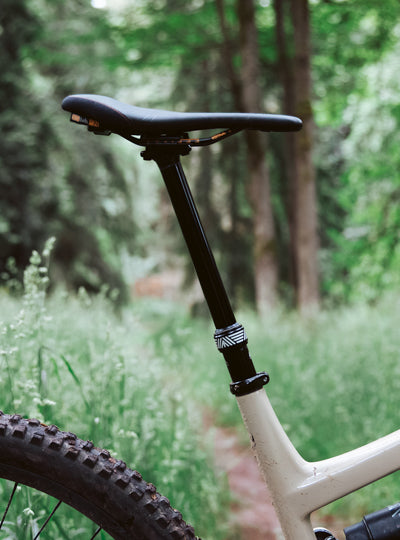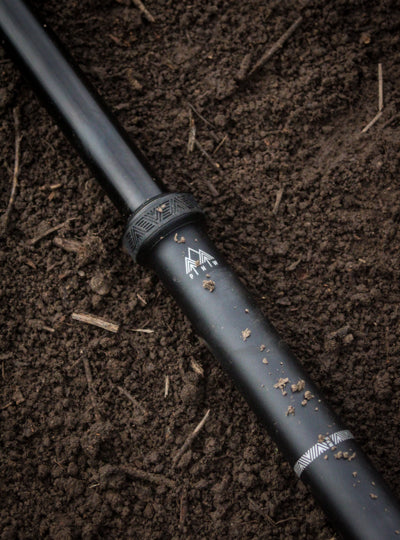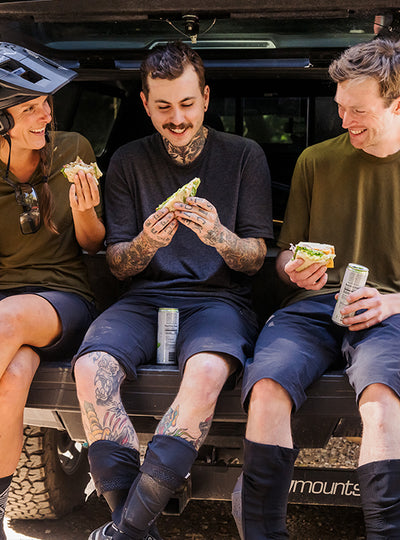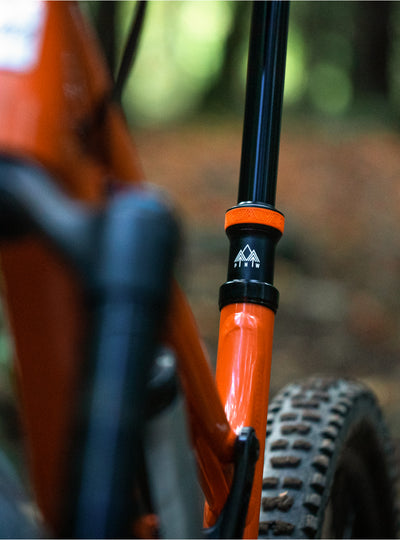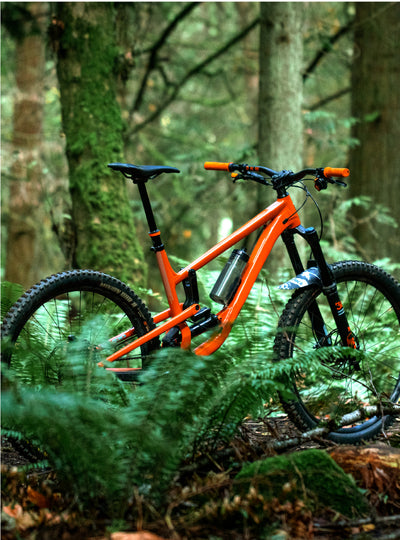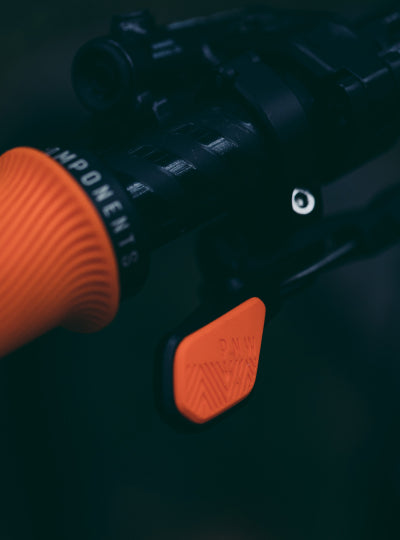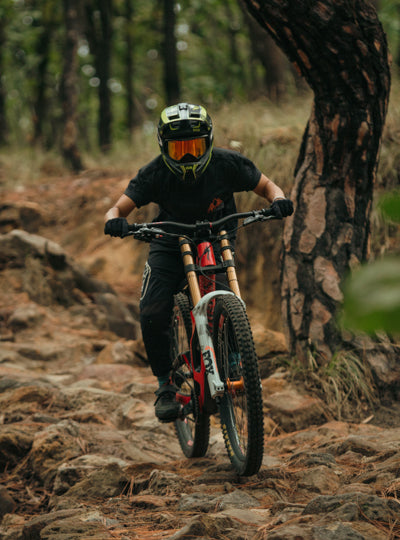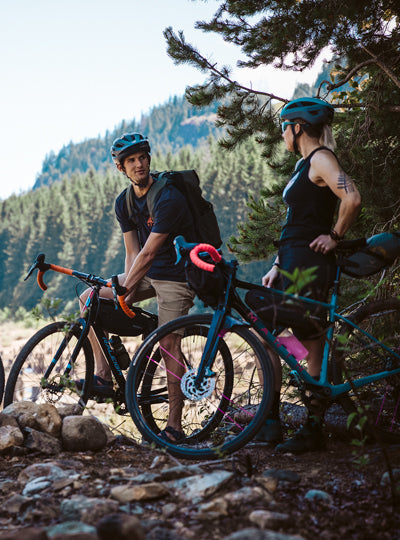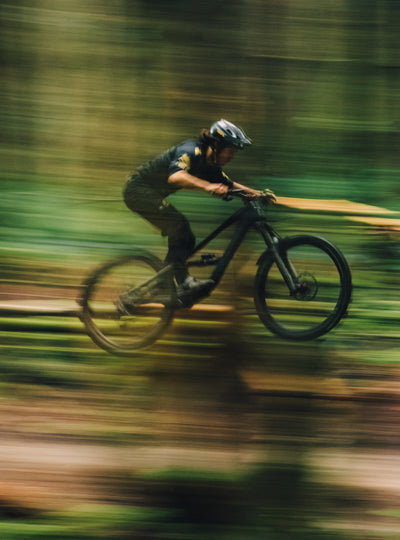When it comes to influential components on your bike, handlebars are often left out of the conversation despite their impact on how you ride. They dictate how you sit, stand, corner, jump, and do everything in between because they impact your posture and strength. Proper handlebar width is key to an optimized cockpit setup since it can impact your bike’s stability, maneuverability, and overall comfort. Getting the right fit is often a trial-and-error process of trimming your handlebars. To start, consider the build of your body, the geometry of your bike, and the type of trail you ride most. Read on for more detailed info about handlebar width, our recommendations, and advice from our experienced PNW Squad members.
Disclaimer: Cutting your handlebars is permanent. No amount of glue can reattach the trimmed pieces of your handlebars safely. If you trim your handlebars too much, you may end up needing to buy another pair.
Every Rider is Different
Every rider is different, so there is no “one-size-fits-all” equation for determining how wide your handlebars should be. Handlebar width is subjective and largely based on personal preference, but in general, riders who are taller, heavier, and have broader shoulders will likely need wider handlebars. The opposite can be said of riders with narrower shoulders and shorter arms. The proper handlebar width will allow you to get into the most efficient riding position where you can align your wrists, elbows, and shoulders and maintain control of your front wheel, so it’s important to tailor your bars to your body.
Note: Your lever placement will impact where you place your hands and how your cockpit feels. If you need advice on how to set up your cockpit, check out our guide on How to Set Up Your MTB Levers.
What Does Your Bike Like?
Like bodies, not all bikes are the same. Before making changes to your handlebar width, understand that the stated reach numbers of your bike are based on the manufacturer’s suggested stem and handlebar geometries. If you change your handlebar’s width, then you’ll also change how your bike rides. Making the switch to a narrower handlebar will wake up the front end of your bike making it more twitchy and easier to maneuver; while a wider bar will increase the stability of your front end and provide a calmer feel than before. If you don’t want to change how your bike handles the trail, counteract the new bar size by getting a longer stem if you’re trimming your bars, and getting a shorter stem if you’re increasing the width of your bars.
What Do You Ride?
The terrain you tackle regularly also plays into your handlebar width preference. When riding XC singletrack, wider handlebars may not be in your best interest because they can make it difficult to handle tight corners or switchbacks, squeeze through small spaces, and slow your ability to jump between different lines on the trail quickly. If you’re looking to go over those obstacles, plow through rock gardens, and point straight down a steep section of trail, you’ll want something a bit wider. Wide handlebars will help you stay in control and keep your front wheel tracking in a straight line while roots and rocks do their best to push you off course.
TIPS FOR FINDING YOUR FIT
It’s best to be like Goldilocks and find the width that’s just right for you by starting with a wide bar and slowly trimming it down. This will allow you to find a width that encourages proper riding form and lets your bike handle as intended without taking too much off your bars at one time. If you’re using our Range Alloy Handlebars or Loam Carbon Bars – use the demarcations on the bar ends to trim your bars in increments of 5mm until you find the ride feeling you’re looking for. Be sure to test your bike a few times after trimming your handlebars to really understand how they’ve impacted your ride before cutting them again.
You will ideally want to have your arms set up to ride in the strongest position possible. The easiest way to find this position is to measure it by using the pushup bar position method. Measure end to end where your fists grip the pushup bar. If you do not have access to a push-up bar, this measurement would be the side-to-side distance of where the pinky sides of your hands meet the ground while doing a push up.
Another method is to install your bars on your bike but without brake levers or grips. Grab the bars to see where you would naturally hold on. Try this in various positions, seated and standing, before cutting off any extra. This way the cut is not influenced by anything else other than comfort. Always start wide, you can’t go back once you’ve made your cuts, but you can always go narrower if you decide after a few rides the bars are too wide for confidence on the trail.
Deep Thoughts from the PNW Squad
Check out some of the recommendations from the PNW Product Squad. 780mm seems to be the hot spot for these guys, but take your time to settle in and find the width that’s right for you.
What is your height, bike size, and preferred handlebar width?
Aaron Kerson: 6’1” // Large // 780mm
TJ Trotter: 5’11” // Large // 780mm
Todd Ford: 5’9” // Large Trail, Medium XC // 780mm
Does your preferred width change depending on what bike, or what type of trail, you’re riding?
Aaron Kerson: I just stick to the same width and roll of the bar so that I can easily jump between bikes without much adjustment period. With that said, the only type of MTB I do is enduro/DH so my advice will be specific for that, I don’t know a ton about XC bike setup.
TJ Trotter: I'm running my bars at 780mm. Starting about 12 years ago when handlebars kept getting wider and wider I rode the bandwagon all the way up to 800mm, but realized only a couple years ago that I felt a little too spread out there. To make sure I was in the right spot I tried 760mm for a while too but finally settled in the middle at 780mm. It gives me the best level of efficiency and stability without feeling cramped or like I'm driving a dump truck.
I'm mostly riding my hardtail and a full suspension trail bike these days, and I try to keep the cockpit on both bikes feeling as similar as possible. Both bikes are running 780mm bars with a PNW 40mm stem.
Todd Ford: Sure does! For my trail bikes, I'll be honest...I typically run my bars at 800mm because I'm lazy. We're constantly testing new bars - new rises, different materials, etc. so I tend to stick to uncut 800mm since I know I most likely won't have them on my bike for very long, and it's more important to keep them consistent while ride testing. My personal preference typically is 780mm though for trail bikes.
While I'm lazy about cutting bars on my trail bikes, I'm a big proponent of 760mm bars on my XC bikes. A wide bar on an XC bike feels super weird and having a slightly narrower bar allows you to get into a more comfortable position, which is a good thing during XC races.
What are you looking for when determining your proper handlebar width? WHY?
Aaron Kerson: I’ve been through two completely opposite trend/fad periods now, starting with running as narrow of a bar as possible for dirt jumping and then the 810mm width craze. I basically ignored the downsides of both and just ran it because I assumed it was best at the time. With some guidance from Kyle Warner and Cody Kelley, I finally realized that too narrow of a bar makes the front end twitchy, and too wide limits your range of motion which means you can’t corner as well since you can’t lay the bike down through corners. Also, you’re far more likely to nail a tree out on the trail if the bar is too wide which is a big factor up here in the Seattle area. I landed on 780mm through some trial and error, for my height and wingspan it feels good through the fast stuff, allows me to lay the bike over in corners and still feels lively off jumps.
TJ Trotter: I feel like I'm able to ride quicker and with less effort on a 780mm bar compared to 800mm. The 800mm feels good descending but climbing and traversing I felt like it required more effort to ride at a quick pace. So for that reason, I try to find the perfect balance between efficiency and stability.
Todd Ford: Like all things in life, it's all about balance. While a wide bar can make you feel super stable and confident especially when riding through technical terrain or hitting drops, being too wide can start affecting your steering characteristics, and your position on the bike, and also leave you with bloody knuckles if you ride in narrow trails. Best to find that balance of stability and confidence while also maintaining a good handling bike that you're comfortable on.
Do you have any additional advice for someone trying to find their preferred handlebar width?
Aaron Kerson: I think the biggest things to realize are that everyone’s dimensions are different so what works for your trail buddy may or may not work for you, AND while the trend is wide (this is changing, finally), many of the top downhill and enduro pros run far more narrow bars than you would expect, so there’s a reason for that. My general rule of thumb is that when I sit on the bike, I don’t want to be too stretched forward. This is a combination of stem length, the reach of the bike, and bar width, but once you figure out what length stem makes sense for your overall body position in relation to the reach of the bike (stem length changes the handling of the front end), bar width is what feels most comfy for your shoulders and wrists. I’ll typically get an 800mm wide bar stock and cut 5mm off each end at a time, go for a ride, see how it feels, and cut more if necessary. I am most picky about finding the balance between flickable, plenty of range of motion ripping through corners but stability over the chattery stuff. Most riders these days will fall between 750-780mm in width, but again there will also be outliers on either end of the spectrum.
TJ Trotter: My advice is to try out as many different configurations as you can! Most of your cockpit setup will be based on personal preference which you can only learn by trying. Move your brake levers around, raise or lower your stem relative to your headset spacers, and if possible try different handlebars and stems. After a few months of that, you'll have a setup that you love and you'll be able to explain why.
Todd Ford: Go to a good bike shop and get a bike fit! Truly understanding your position on a bike makes a massive difference, and in most fits, they'll also work with you on bar widths, stem lengths, etc. You can also hack the system a bit by testing bar widths before cutting your bars. Either use a grip that uses a bar end plug or if you have closed end grips, cut the end off so the bar can go completely through the grip. Now you can adjust your grip position to see what it'll feel like with narrower bars before you commit to the cut.
WARNING: Only ride this setup to test out your preference. As soon as you're happy with your position, cut those bars and install bar end plugs or closed-end grips. Riding with the ends of your bars exposed can be extremely dangerous, nobody wants a core sample of their own body!
If you have questions regarding the article above, or any of our products, please reach out to our Customer Service team at info@pnwcomponents.com.
HOW TO TRIM THE LOAM CARBON BAR
Curious how to properly trim down your Loam Bar?




